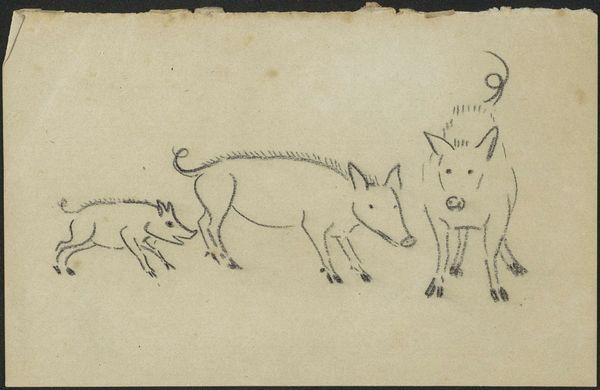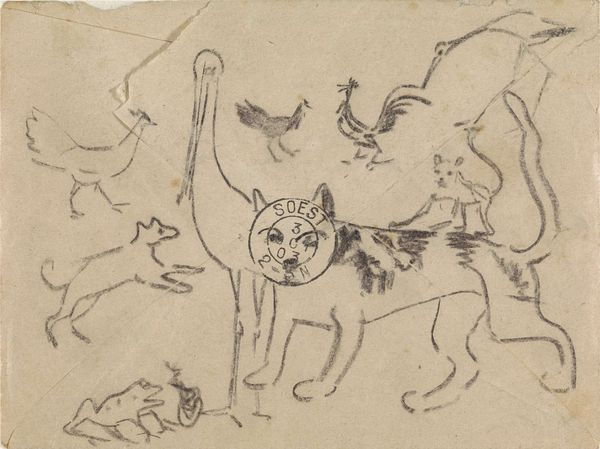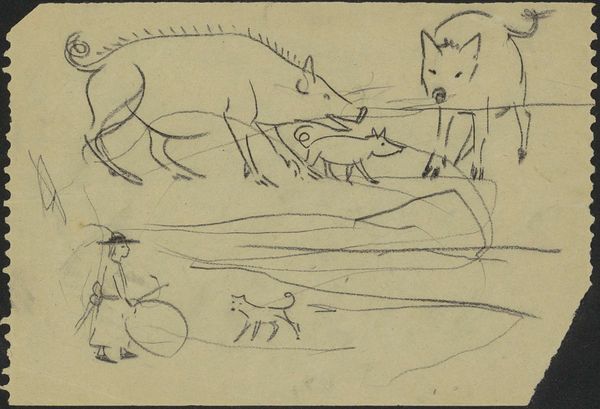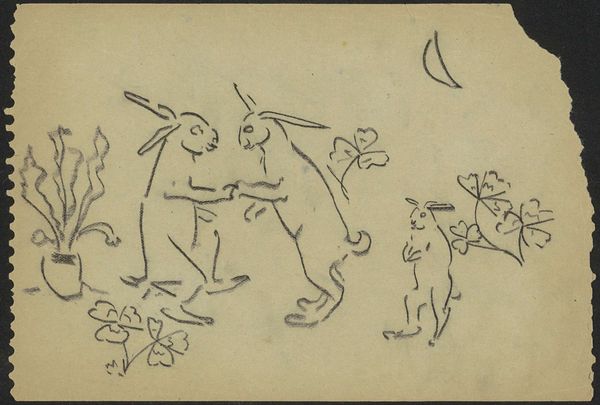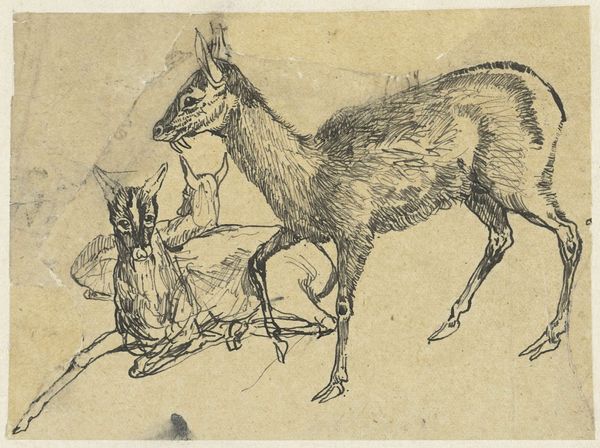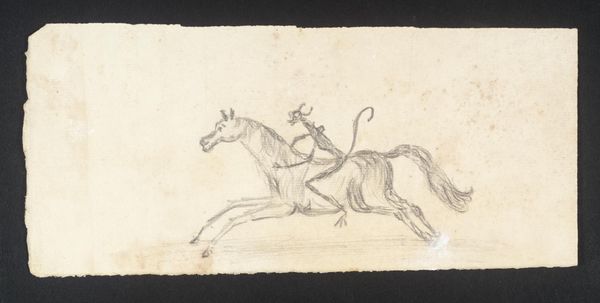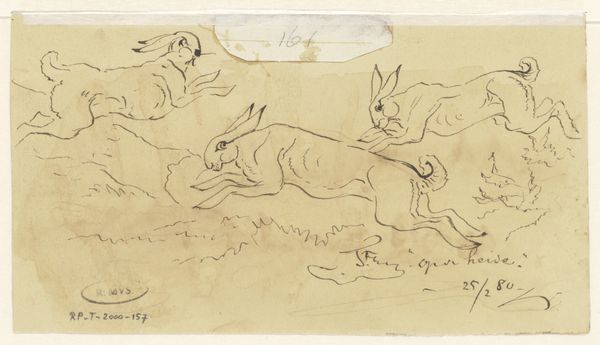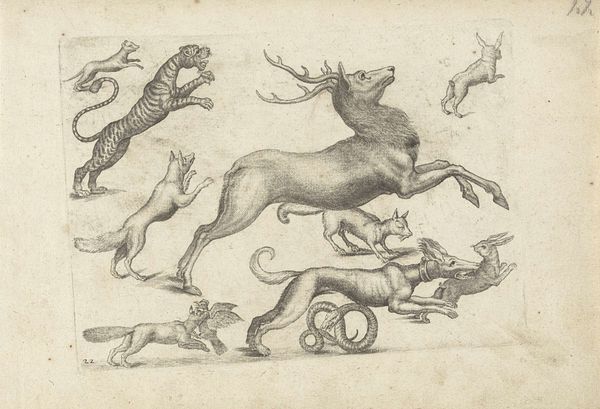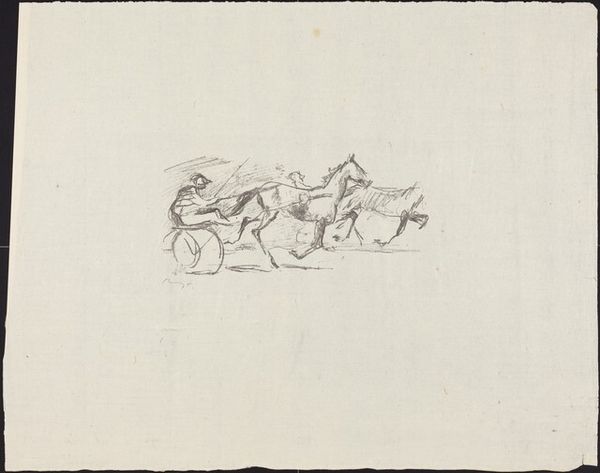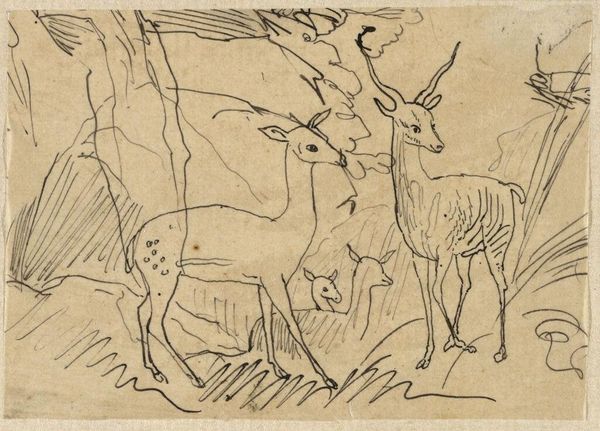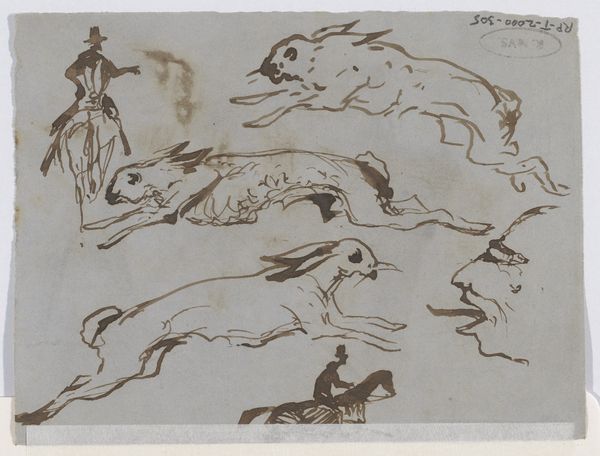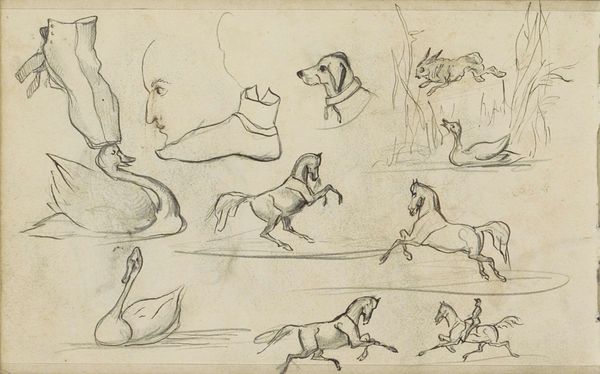
drawing, paper, ink, pen
#
drawing
#
quirky sketch
#
animal
#
pen sketch
#
incomplete sketchy
#
hand drawn type
#
figuration
#
paper
#
personal sketchbook
#
ink
#
ink drawing experimentation
#
pen-ink sketch
#
sketchbook drawing
#
pen
#
sketchbook art
#
initial sketch
Dimensions: height 107 mm, width 136 mm
Copyright: Rijks Museum: Open Domain
Curator: Here we have Gerrit Willem Dijsselhof's "Three Rabbits and a Hunting Dog," a pen and ink drawing on paper, dating from sometime between 1876 and 1924. Editor: It feels so whimsical! The animals are rendered with such simple lines, yet they're full of character. What do you see in this piece? Curator: For me, it speaks to the dynamic between predator and prey, and perhaps a broader commentary on power structures. Look at how the dog is positioned above the rabbits, its skeletal form perhaps alluding to a looming sense of mortality. It brings into question our relationship with the natural world, especially how human intervention through hunting skews these dynamics. Editor: I didn't think about it like that at all. It seemed so innocent at first glance. Are you saying Dijsselhof was perhaps critiquing hunting practices? Curator: It's difficult to say definitively what Dijsselhof intended. But given the period – a time of increasing industrialization and urbanization – it's reasonable to interpret it as a reflection on the changing role of nature in society, perhaps with a critical eye towards the human impact. The rabbits huddling together also raises questions about community and resilience in the face of threats. What do you think? Does it challenge your initial impression? Editor: It does. I initially saw just a charming sketch, but now I see a subtle undercurrent of tension and vulnerability, and a visual representation of that constant negotiation in society. I'll definitely look at art with more contextual questions in mind. Curator: Exactly. It's about asking "who benefits?" and "who is marginalized?" within the visual narrative. Editor: Thanks so much for opening my eyes to that. Curator: My pleasure.
Comments
No comments
Be the first to comment and join the conversation on the ultimate creative platform.
